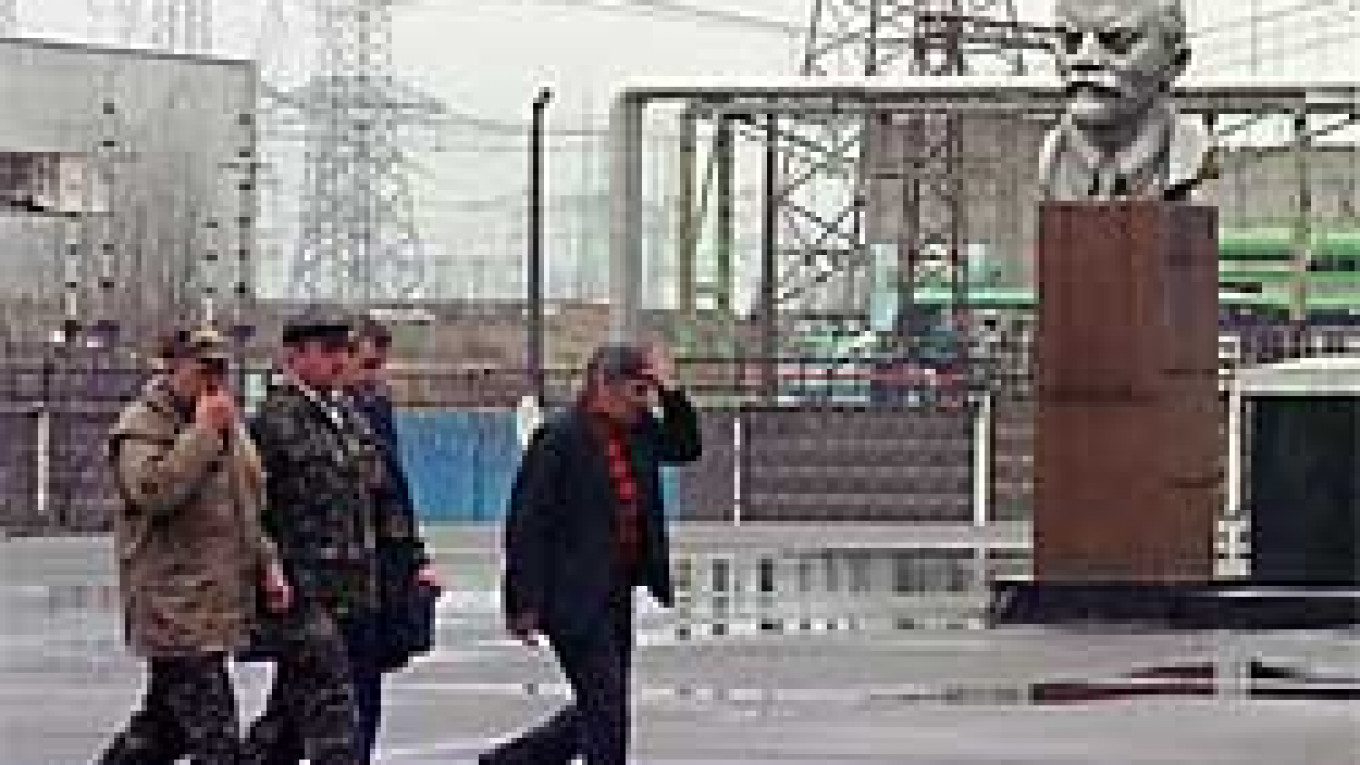The April 26, 1986, explosion that ripped through Chernobyl?€™s reactor No. 4 spewed a huge radioactive cloud over Europe. The then-Soviet republics of Ukraine and Belarus were the most affected, and they continue to bear the deepest scars. For me, along with millions of other Ukrainians, the Chernobyl catastrophe has become a part of everyday life. And as the radiation claims more victims among friends, the tragedy isn?€™t fading ?€” it?€™s getting ever closer.
Statistics tell part of the story. In Ukraine alone, at least 4,365 people have died of radiation-related diseases contracted after taking part in the cleanup effort organized by the Soviet government after the explosion. That?€™s just a fraction of the overall toll among an estimated 650,000 "liquidators" who came from all over the Soviet Union. In all, about 3.4 million of Ukraine?€™s 50 million people, including nearly 1.3 million children, were exposed to radiation from the disaster. Cancer of the thyroid, a gland that attracts radiation, is gradually claiming more victims. While no cases were registered in Ukraine in 1981-85, 1,217 people, who like Yaryna were children or adolescents at the time of the explosion, were operated on for thyroid cancer between 1986 and 1999.
According to Ukrainian government figures, 70,000 people in Ukraine alone have been disabled by radiation. The no-entry zone around the Chernobyl plant covers 2,600 square kilometers of the most poisoned land on Earth. About 120,000 people used to live in the 90 villages within the then-flourishing region. Now it is a high-security zone behind coiled razor wire, protected by some 800 guards. No one can enter without special permission.
The surrounding district was once one of the most picturesque regions in Ukraine, and the beauty can still be seen in the rich pine and birch forests, full of berries and mushrooms. Wolves, boars and elk prowl the woods, while huge catfish swim the rivers ?€” doomed by the plutonium and cesium that are lodged in their organs. Scientists have found unusual mutations in mice in the area. Pine saplings have sprouted sickly brown branches, a sign of morphological change resulting from radiation. Several spots inside the exclusion zone are particularly dangerous: As I approached them, the Geiger counter emitted high-pitched whines and showed a radiation level dozens of times higher than the safe upper limit.
Among them is a sprawling graveyard for abandoned equipment ?€” 1,350 vehicles that were irradiated during the cleanup operation. There?€™s row upon row of red-starred military helicopters, armored vehicles, tanks, trucks, bulldozers, fire engines and ambulances. I thought of the people who used to work on these vehicles. Some of them worked for only about 20 minutes shoveling radioactive debris. All the same, many have died of radiation poisoning.
The radiation level inside is so high that plant employees, most of whom are prohibited from entering the structure, joke that it?€™s the biggest microwave in the world. Despite the danger, I jumped at a chance to tour inside the sarcophagus, where only a handful of journalists have ever been inside.
Donning two layers of thick white cotton clothes, protective rubber boots, special hats and a helmet, padded jackets, gloves and a mask for my face, I followed my guide, Artur Korneyev, through the wreckage to the old control room. This was the place where it all happened at 1:23 a.m. on April 26, 1986, as Soviet engineers began testing a rapid-intervention safety system. They threw a power switch, and the explosion followed immediately. The switch they used has disappeared, as have numerous other buttons. Souvenir-hunters stole them, leaving holes in the control panel.
We bent our heads to get through the dark, narrow labyrinth of passages leading to the center of the sarcophagus. The walls are covered with lead plates intended to decrease radiation levels, and the floors hold piles of lead and boron powder dropped by helicopters in an attempt to suppress the nuclear reaction. I stole a glance at my Geiger counter, which registered about 800 roentgens an hour ?€” 16,000 times the safe limit.
After my visit, colleagues told me I was crazy to have gone inside. I don?€™t think so. It is an important story for Ukraine and elsewhere. The danger Chernobyl poses to humanity is the reason Western governments and environmentalists pressured Ukraine for years to close the power plant, and the government finally agreed. That won?€™t put the danger to rest. The zone will be off limits for ages because of its contamination.
A Message from The Moscow Times:
Dear readers,
We are facing unprecedented challenges. Russia's Prosecutor General's Office has designated The Moscow Times as an "undesirable" organization, criminalizing our work and putting our staff at risk of prosecution. This follows our earlier unjust labeling as a "foreign agent."
These actions are direct attempts to silence independent journalism in Russia. The authorities claim our work "discredits the decisions of the Russian leadership." We see things differently: we strive to provide accurate, unbiased reporting on Russia.
We, the journalists of The Moscow Times, refuse to be silenced. But to continue our work, we need your help.
Your support, no matter how small, makes a world of difference. If you can, please support us monthly starting from just $2. It's quick to set up, and every contribution makes a significant impact.
By supporting The Moscow Times, you're defending open, independent journalism in the face of repression. Thank you for standing with us.
Remind me later.


